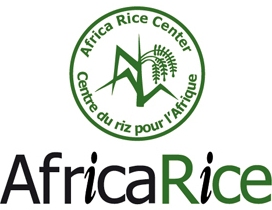As part of its mandate, the Africa Rice Center (AfricaRice) plays a key role in advising its member countries on critical rice production and marketing issues. For example, the rice crisis in 2008 in Africa was clearly predicted by AfricaRice and its member countries were alerted in 2007 through the Council of Ministers, which is AfricaRice’s highest oversight body. As a result, many African rice-producing countries have developed and are implementing national rice development strategies under the Coalition for African Rice Development (CARD) framework to reduce their dependence on imported rice.
AfricaRice wishes to caution its member countries that it has recently received credible information on plans by Thailand to export 11.4 million tons of government stockpiled rice in May and June 2016. Though it would seem unrealistic to export 11.4 million tons in just two months, this is really a sword of Damocles hanging over the head of Africa’s rice sector, as African countries might be used again as a dumping ground if care is not taken.
Recently newspapers from West African countries have reported that “sub-standard” quality rice is being imported, particularly from Asian countries since African markets are considered as “not too demanding” regarding quality aspects. Poor quality imported rice has been tracked in parts of West Africa. In Senegal, the National Police recently seized 22,690 tons corresponding to a value of six billion FCFA (US$10.3 million) of Indian broken rice, unsuitable for human consumption.
AfricaRice wishes, therefore, to draw the attention of decision-makers in Africa, including the Council of Ministers of AfricaRice and all its development partners, to implications of such massive rice export within a short period to Africa for the three key drivers of Africa’s rice sector indicated below.
- World market: The rice price in the world market is currently increasing and is estimated to be at a rate of about 1% and 2% in February and March 2016, respectively (OSIRIZ, 2016). If we assume that the rate will continue to increase over 2%, Thailand will indeed gain a lot of money while Africa’s trade balance will be adversely affected. This would lead to price effects that could undermine efforts that are being made to support the sustainable and increased production of locally produced rice in quantity and quality.
- Public health: Some of the stockpiled rice intended for export might have been stored for a long time using chemicals, which could have adverse effects on consumers. Though consumers will tend to save from the low price of imported rice, they will need to spend more money in remedying their health.
- Rice self-sufficiency ambitions of African governments: The dumping of massive quantities of rice in Africa’s rice market will discourage production and sale of local rice. It will certainly be counter-productive to the rice self-sufficiency goal of African countries. In effect, Africa’s farmers, processors as well as all the other actors of the rice value chain will, as usual, face the problem of competiveness in terms of permanent availability and low price of imported rice on markets, which can lead to demotivation since their revenue will decrease. This will in turn lead to decreased production of quality rice in the long run especially if business continues as usual.
At this point AfricaRice wishes to provide the following policy advices:
- Standards for rice quality: For public health reasons, there is urgent need to ensure imported rice meets desired quality standards. African governments need to adopt non-tariff measures based on standard quality rice imported from any country, and ensure effective quality control at the borders.
- Tracking of imported rice in Africa’s market: Government agencies and rice importers, and farmers need to closely track movements of imported rice in Africa’s rice market. Moreover, if African governments can certify the physical and nutritional quality of the imported rice, then they should start the implementation of rice bulk purchase and storage programs, as two important policy instruments at the regional level (as indicated in a paper by AfricaRice Director General Dr Harold Roy-Macauley, to facilitate the imports of rice with the involvement of partners from the public and private sectors, for a better management of these imports.
- Policy measures which enhance rice value chain competiveness: Rice produced locally is competitive in quality and price, hence appealing to local consumers. AfricaRice pioneering work on “willingness to pay” (WTP) for rice is providing evidence that domestic rice is preferred over imported rice of equivalent quality. The implementation by governments of policies that encourage market competitiveness of the commodity should be intensified. Four main policies that could be advanced are as follows: (i) Increase investment in climate-resilient irrigation systems to boost productivity and reduce unsustainable rainfed rice area expansion; (ii) Increase investments in processing and marketing systems to bring local rice of good quality to urban consumers; (iii) Avoid high external tariffs and (iv) Bring rice science to the forefront of Africa’s policy debate.
Within the context of the mandate given to it by its constituency, AfricaRice reiterates its commitment to consolidating partnerships with African governments to boost the Africa’s rice sector, in general, and achieve rice self- sufficiency in countries, in particular.





